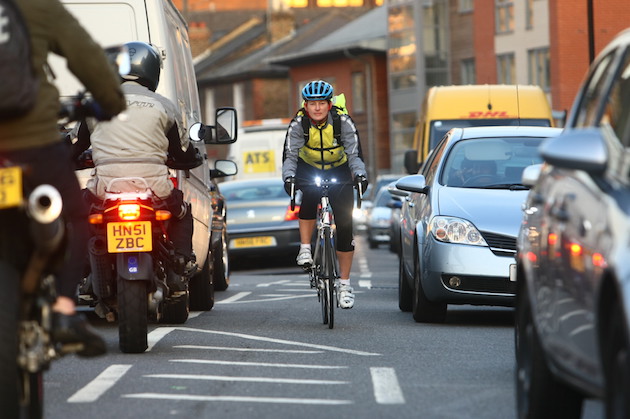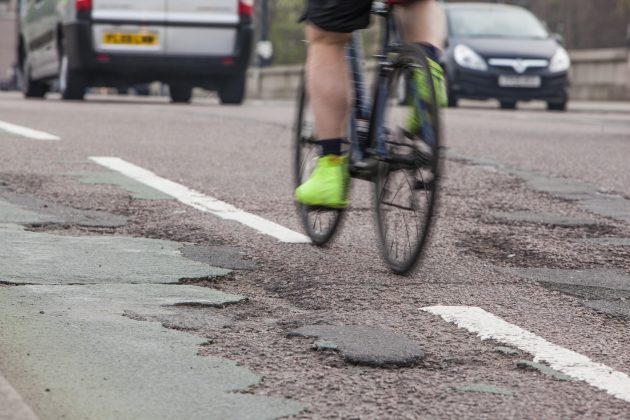Cycling Action Plan sets out ambitious goals for improved cycling infrastructure in London
Plans include quality assessment of infrastructure and amalgamation of cycle lanes under new identity - but no new lanes themselves


London's Mayor and Transport for London (TfL) have teamed up to publish a Cycling Action Plan, aimed at addressing poor air quality and congestion.
The five-year plan aims to raise the quality standards for new infrastructure, and make London "the world’s best big city for cycling by creating an environment where everyone who wants to cycle can do so."
In the plan, the mayor Sadiq Khan sets out his ambition to increase journeys made via walking, cycling and public transport to 80 per cent by 2041, compared to the present 63 per cent.
The plan also aims for 70 per cent of Londoners to live within 400 metres of the city-wide cycle network - representing a 28 per cent increase.
By 2024, the Action Plan aims to have delivered a 'Mini Holland' programme, with new sections of the cycle network opened. Plans also include the completion of 'Safer Junctions', noting that 46 per cent of Londoners say they're put off cycling due to fear of collisions.
The 59-page document details how all new infrastructure will need to meet six quality criteria in order to receive funding - these relate to volumes and speed of traffic, width of the space for cyclists, kerbside activity which could hinder cyclists, number of HGVs and risk of collision at junctions.

Plans also include merging two current cycle path networks: the Cycle Superhighway and Quietways, adding in signs and ensuring they meet new quality criteria.
The latest race content, interviews, features, reviews and expert buying guides, direct to your inbox!
This is because, as the plan acknowledges, many Londoners find the current lanes "misleading and confusing." The name and identity for the routes will be unveiled in 2019.
However, whilst all of these developments and the 'people-focused approach' is welcome, the plan does not detail the creation of any new cycle paths.
The document also references the Santander Cycle hire scheme, with aims to continue to develop it, with a 'focus on customer needs' and 'a roll-out of the next-generation, British-built Santander Cycles.'
In addition, come 2019, a new 'Cycling Infrastructure Database (CID)' is promised. This free of charge system will offer tailored journey planning and cycle parking mapping.
Introducing the plan, Khan said: “Getting more Londoners cycling is essential for our city’s future health and prosperity, and our new Action Plan launched today shows how we’re going to go further than ever before to make this a reality.
“The evidence is clear - where we’ve built new high-quality cycling infrastructure, the routes have been hugely successful in getting more people on their bikes.
“Despite this, too many Londoners still don’t have the high-quality cycle routes they need in their local neighbourhood.
“I’m delighted to be announcing some of the major new work that will start on cycle routes across London next year, and in introducing new quality standards for cycle routes, I’m determined to ensure every Londoner feels comfortable and safe getting on a bike, whatever their age, experience or background.”
In his foreward, cycling and walking commissioner Will Norman said: "For too long we’ve heard that people cycle more in countries such as Denmark and the Netherlands because it’s part of their culture, or because it’s flat, or because the cities there are compact.
"But none of those are the reason why cycling is more popular in these places. In truth, these cities see more cycling because their streets have been designed to prioritise people, not cars."
Acknowledging London's need to change, he added: "More people cycling frees up space on overcrowded buses and trains. It makes our air cleaner. It gives everyone the chance to get around London quickly and affordably. It improves our mental and physical health. It makes our high streets and public places more vibrant.
"Making it easier to cycle means our city will be a better place to live, to work, to invest in, to raise children in. That is why we must continue this journey and enable more people to choose to cycle."
The plans to develop cycling in London follow on from ambitious aims for Manchester to receive 75-miles worth of new Dutch style cycle lanes, under the watch of the city's walking and cycling commissioner, Chris Boardman.
Boardman is the first to take on the role for the city, and also aims to introduce 1,400 ‘safe crossings’ marked out with zebra crossings at every side road, as well as 25 “filtered neighbourhoods”, where the priority is given to the movement of people.
Michelle Arthurs-Brennan the Editor of Cycling Weekly website. An NCTJ qualified traditional journalist by trade, Michelle began her career working for local newspapers. She's worked within the cycling industry since 2012, and joined the Cycling Weekly team in 2017, having previously been Editor at Total Women's Cycling. Prior to welcoming her first daughter in 2022, Michelle raced on the road, track, and in time trials, and still rides as much as she can - albeit a fair proportion indoors, for now.
Michelle is on maternity leave from April 2025 until spring 2026.
